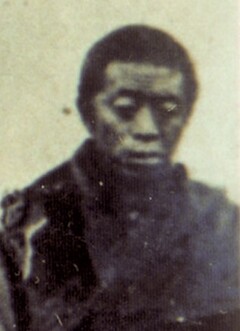Prayer to Jamyang Gyaltsen
Translator's Introduction
The text that follows, which is only twelve lines long, appears twice in the 2012 edition of Jamyang Khyentse Chökyi Lodrö's writings. One version is included in the section of praises (bstod pa), where a note (yig chung) at the end simply states that Jamyang Khyentse composed it at the request of Jamyang Gyaltsen’s disciples. The version below is included in the prayers (gsol 'debs) section, where it appears with a different heading and colophon, both of which specify that the text was composed on the occasion of Jamyang Gyaltsen’s bestowal of the oral transmission for the collected writings of Gorampa Sönam Senggé (1429–1489). There is no date provided, but we know from David Jackson’s research that the transmission took place in 1926, when Jamyang Khyentse would have been thirty-four years old. This makes it one of his earliest known compositions.
༄༅། །ཀུན་མཁྱེན་ཆོས་ཀྱི་རྒྱལ་པོའི་གསུང་པོད་བཅུ་གསུམ་པ་ལྗགས་ལུང་གནང་སྐབས་ཀྱི་གསོལ་འདེབས།
Prayer on the Occasion of the Reading Transmission for the Omniscient King of Dharma's Thirteen-Volume Collected Writings
by Jamyang Khyentse Chökyi Lodrö
ན་མོ་གུ་རུ་ཝཱ་གཱི་ཤྭ་ར་མཉྫུ་གྷོ་ཥ་དྷྭ་ཛ་ཡ།
Namo guru vāgīśvara-mañjughoṣa-dhvajāya.
འཇ༵མ་དབྱང༵ས་བླ་མའི་བྱིན་རླབས་སྤྲིན་ཕུང་ལས། །
jamyang lamé jinlab trinpung lé
From the cloud-banks of blessings from the Mañjughoṣa Guru1
མདོ་སྔགས་ནོར་བུའི་གྲུ་ཆར་ལྷུག་པར་འཇོ། །
do ngak norbü druchar lhukpar jo
Falls the gentle rain of sūtra and mantra jewels
ཀུན་དགའི་བསྟན་པའི་རྒྱལ༵་མཚན༵་རྩེར་བཀོད་པ། །
küngé tenpé gyaltsen tser köpa
To be placed atop the victory banner of Kunga’s teachings—2
དཔལ་ལྡན་བླ་མའི་ཞབས་ལ་གསོལ་བ་འདེབས། །
palden lamé zhab la solwa deb
Glorious guru, at your feet I pray!
གཞན་ཕན་བྱམས༵་པའི༵་དཔལ༵་དང་ལྡན༵་པའི་མཆོག །
zhenpen jampé pal dang denpé chok
Supreme of those endowed with splendid altruism and loving kindness,
ཤེས༵་རབ༵་གསུམ་གྱིས་ཆོས་ཚུལ་རྣམ་པར་འབྱེད། །
sherab sum gyi chö tsul nampar jé
You discern the ways of Dharma with threefold wisdom
ཡང་དག་ལྟ་སྒོམ་སྤྱོད་པའི་ཁང་བཟང་དུ། །
yangdak ta gom chöpé khang zang du
In the fine mansion of authentic view, meditation and conduct—
རྟེན་བཅས་བཤེས་གཉེན་ཆེན་པོར་གསོལ་བ་འདེབས། །
ten ché shenyen chenpor solwa deb
Great spiritual friend, to you I pray!
བདག་སོགས་ཚུལ་ཁྲིམས་རྣམ་པར་དག་པ་དང་། །
dak sok tsultrim nampar dakpa dang
May I and others develop impeccable ethical discipline,
ངེས་འབྱུང་བྱང་ཆུབ་སེམས་གཉིས་རྒྱུད་ལ་སྐྱེ། །
ngejung changchub sem nyi gyü la kyé
May renunciation and twofold bodhicitta awaken in our being,
རིམ་གཉིས་ལམ་གྱི་བགྲོད་པར་མཐར་ཕྱིན་ནས། །
rim nyi lam gyi dröpar tarchin né
May we perfectly traverse the paths of the two stages
ཆོས་ཀྱི་རྒྱལ་པོའི་གོ་འཕང་ཐོབ་པར་ཤོག །
chö kyi gyalpö gopang tobpar shok
And ultimately attain the level of a Dharma Sovereign!
ཅེས་པའང་རྗེ་བླ་མ་དྲྭ་སྒང་ཆོས་སྡེར་ཀུན་མཁྱེན་ཆོས་ཀྱི་རྒྱལ་པོའི་གསུང་པོད་ ༡༣ ལྗགས་ལུང་གནང་སྐབས་ཞལ་སློབ་རྣམས་ཀྱི་གསུང་བསྐུལ་ངོར། ཆོས་ཀྱི་བློ་གྲོས་པས་གསོལ་བ་བཏབ་པ་སིདྡྷི་རསྟུ། །
Chökyi Lodrö offered this prayer at the request of the master's disciples on the occasion of his granting the reading transmission for the Omniscient King of Dharma's thirteen-volume collected writings3 at the dharma centre of Dragang. Siddhirastu!
| Translated by Adam Pearcey with the generous support of the Khyentse Foundation and Tertön Sogyal Trust, 2019.
Source:
'Jam dbyangs chos kyi blo gros. "kun mkhyen chos kyi rgyal po'i gsung pod bcu gsum pa ljags lung gnang skabs kyi gsol 'debs/" in ’Jam dbyangs chos kyi blo gros kyi gsung ’bum. 12 vols. Bir: Khyentse Labrang, 2012. W1KG12986 Vol. 3: 193
Version: 1.2-20250516
- ↑ The prayer incorporates the syllables of what appears to be Jamyang Gyaltsen's full name: Jamyang Gyaltsen Jampa Palden Sherab. Note, however, that this version of his name is not attested in any other source, including the two available biographies by Dezhung Rinpoche and Gelek Puntsok.
- ↑ i.e., the Sakya teachings, which derive from Sachen Kunga Nyingpo.
- ↑ That is, the collected writings of Gorampa Sonam Senge (1429–1489), which Jamyang Gyaltsen had compiled.
